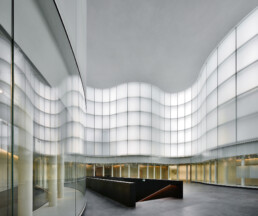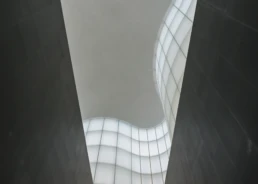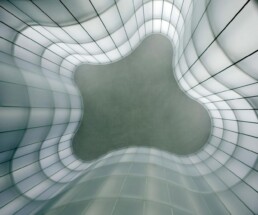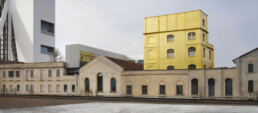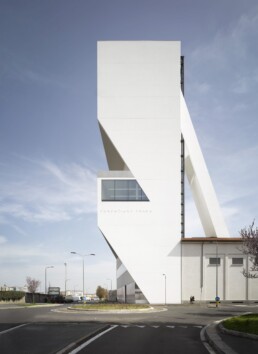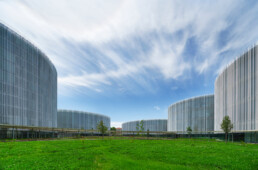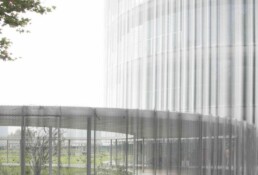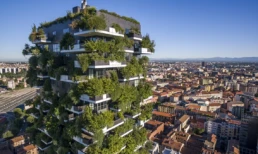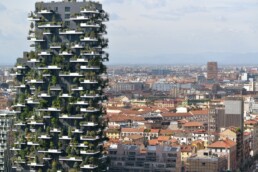Contemporary architecture in Milan: What to see
DATE
07.08.2024
Milan, known as the capital of design and fashion, is also a reference in contemporary architecture. The city is home to an impressive collection of modern buildings that stand out for their innovation, design and functionality. Milan has established itself as a laboratory of contemporary architecture, where innovation and design combine to create spaces that reflect the trends and needs of the 21st century. From museums and cultural foundations to green skyscrapers and university campuses, the city offers a rich diversity of projects that continue to inspire and challenge architectural conventions.
A visit to these landmarks allows us to appreciate the creativity and vision of some of the most influential architects of our time. Below, we propose a tour of some of the most attractive buildings from this point of view:
MUDEC, designed by British architect David Chipperfield, is a museum dedicated to world cultures. Opened in 2015, the building is located in the Tortona area, a revitalized industrial area. Chipperfield’s design combines the elegance of minimalism with clear functionality. Its translucent glass façade lets in natural light, creating a serene and contemplative interior environment. The museum houses permanent collections and temporary exhibitions, making it a cultural landmark in the city.
The Fondazione Prada, designed by the architectural firm OMA, led by Rem Koolhaas, is one of the most outstanding examples of contemporary architecture in Milan. Opened in 2015, the foundation is housed in a former distillery in the south of the city, transformed into a complex of innovative buildings housing exhibitions of modern and contemporary art. OMA’s design preserves original industrial elements, combining them with new avant-garde structures, such as the “Haunted House,” a building clad in gold leaf. The Fondazione Prada is a dynamic and multifaceted space that reflects the interplay between past and present.
The Bocconi University campus, designed by the Japanese firm SANAA, founded by Kazuyo Sejima and Ryue Nishizawa, is another landmark of contemporary architecture in Milan. This project, completed in 2008, is characterized by its focus on transparency and spatial fluidity. The campus buildings are wrapped in glass facades that blur the boundaries between inside and outside, creating an open and luminous environment. SANAA’s design promotes interaction and collaboration among students, faculty and visitors, reflecting the values of modern education.
The Bosco Verticale, designed by Stefano Boeri, is a masterpiece of green architecture. Opened in 2014, these two residential skyscrapers are covered with more than 900 trees and numerous plants, forming a vertical ecosystem that improves air quality and urban biodiversity. Located in the Porta Nuova district, the Bosco Verticale buildings are not only visually stunning, but also represent a sustainable model for the cities of the future. The integration of nature into urban architecture is one of Boeri’s most significant contributions to contemporary architecture.
CityLife is one of the largest and most ambitious urban regeneration projects in Milan. This development includes a mix of offices, residences and commercial areas, highlighted by towers designed by world-renowned architects: the Isozaki Tower (or Allianz Tower) by Arata Isozaki, the Hadid Tower (or Generali Tower) by Zaha Hadid, and the Libeskind Tower (or PwC Tower) by Daniel Libeskind. CityLife combines modern architecture with ample green spaces, providing a balanced and sustainable urban environment. It is an outstanding example of how contemporary architecture can transform and revitalize urban areas.
In addition to those mentioned above, Milan is home to other contemporary projects of great interest. The Unicredit Tower, designed by Cesar Pelli, is the tallest skyscraper in Italy and a symbol of the new Porta Nuova district. The Feltrinelli Foundation building, designed by Herzog & de Meuron, is another example of contemporary architecture that combines functionality and aesthetics, with a distinctive facade that stands out in the cityscape.
MArch Valencia. Arquitectura y Diseño
© 2025 MArch Valencia. Arquitectura y Diseño
Privacy policy | Cookies policy | Terms of use



